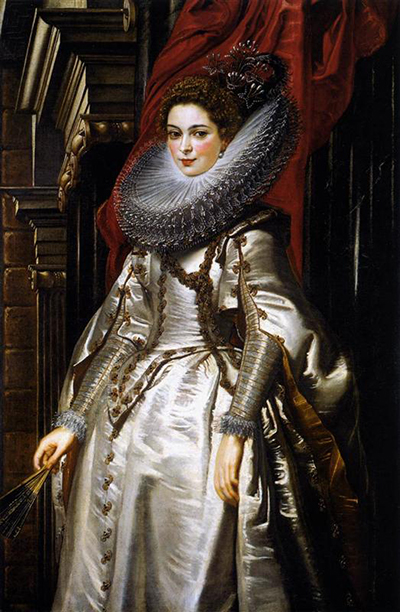This portrait of Marchesa Brigida Spinola-Doria is amongst Peter Paul Rubens' most famous paintings and is on display at the National Gallery of Art in Washington DC, USA
Artist Rubens spent time living in several different European countries during his lifetime and was in Italy between 1600 and 1609. Many siginificant artworks came during his time here and several have remained in Italy ever since.
This famous Flemish painter had already developed a significant reputation which helped to gain this particular commission for the 22-year-old newlywed that we see so beautifully captured here. Coming from one of the republic's most powerful and influential families, there was no issue with finding the finance for this commssioned piece.
In Garden of Love artist Rubens actually captures himself and his new wife in a similar scenario of post-wedding reflection and celebration.
The attire and architectural background used in this 1606 portrait underline her privileged background whilst the painting itself is sized at one metre wide by one and half metres tall. Rubens would use almost all of his best attributes as an artist in this painting, his mastery of draped clothing, the architectural lines behind the subject and finally her stunning facial beauty which he effortlessly translates into a finished work.
Significant research has been perfomed on the career of Rubens and one interesting item to have been uncovered is a drawing which tells us how this painting has been cropped from a large original piece. The decision to do this is unclear, but it was in fact a full length portrait on the larger canvas prior to amendment.
Rubens would have appreciated this young lady's beauty, with large brown eyes and a delicate facial structure, meaning he could produce a flattering artwork but without having to divert from reality. This marriage was to bond two key families and this method of strengthening business and political ties was common during this time.




